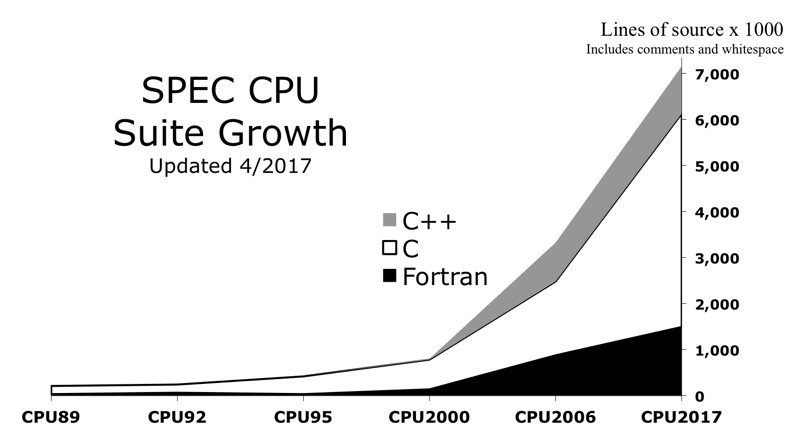The SPEC Open Systems Group:
Originators and continued innovators
SPEC OSG is the developer of the first SPEC benchmark, SPEC CPU®, introduced in 1989 with a VAX 11/780 as a reference machine and including 10 benchmark programs. The fifth and latest version of the benchmark is SPEC CPU 2017, comprising 43 benchmark programs and more than seven million lines of source code.
No one could have imagined 30 years ago that within three decades SPEC OSG would introduce multiple versions of a dozen benchmarks and three widely used tools for measuring energy efficiency for servers. SPEC/OSG benchmarks as of January 2019 include:
SPEC Cloud® IaaS 2018 -- SPEC's infrastructure-as-a-service (IaaS) performance benchmark for public and private cloud platforms.
SPEC CPU® 2017 -- The current release of SPEC's popular processor performance tests.
SPECjbb® 2015 -- A server-side Java benchmark, developed from the ground up to measure performance based on the latest Java application features.
SPECjEnterprise® 2018 Web Profile -- Measures full-system performance for Java Enterprise Edition (Java EE) Web Profile Version 7 or later application servers, databases and supporting infrastructure.
SPECjEnterprise® 2010 -- Measures full-system performance for Java Enterprise Edition (Java EE) Version 5 or later application servers, databases and supporting infrastructure.
SPECjvm® 2008 -- The current Java virtual machine (JVM) benchmark, with multithreaded workloads that represent a broad range of application areas.
SPECpower_ssj® 2008 -- The first industry-standard benchmark that evaluates the power and performance characteristics of volume server-class computers.
SPEC SFS® 2014 -- The latest iteration of the "Solution File Server" benchmark, a test of file server performance.
SPEC VIRT®_SC 2013 -- SPEC's updated benchmark addressing performance evaluation of datacenter servers used in virtualized server consolidation.
SPEC CPU Fun Facts
More than 64,000 SPEC CPU results have been published on the SPEC website. To put this into perspective:
• It would take a server 106 years running 24/7/365 to generate these results.
• It would cost $28+ million if you hired an engineer to run those tests.
• If you printed the results out on standard-size paper and placed them end to end, they would reach 14 km (8.7 miles) into space.






